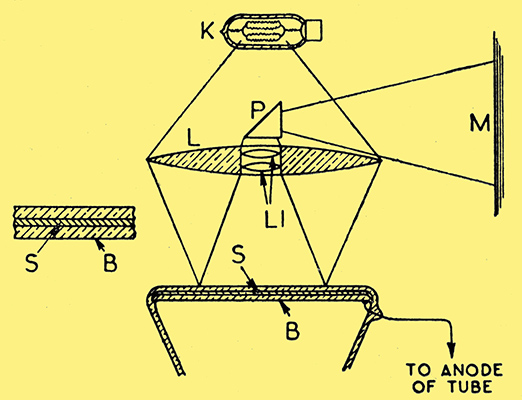|

Projected television.
The fluorescent screen of a cathode-ray tube is replaced by a thin film or layer of a substance, such as paraffin wax which tends to become liquid and more transparent under the action of heat. The effect, is used to modulate the light from an external lamp, thereby reproducing the picture.
The figure shows the bulb end of a cathode-ray tube which is provided with the usual electrodes for scanning, and for modulating the electron streams in accordance with the received signals. The wax film or screen S is enclosed between two glass walls, the inner of which carries a thin backing B of silver. Light from a lamp K is focused by a condensing lens L on to the bulb. The light reflected back from the silver coating B is controlled by the varying transparency of the intervening film of wax, as it is heated from point to point by the impact of the modulated electron stream. It is collected by the centre lenses L1 and is projected by a prism P on to an external viewing screen M. The inside film of silver B is preferably kept at the same potential as the anode.
Farnsworth Television and Radio Corporation. Convention date (USA) September 7th, 1940. No. 547,075.
|